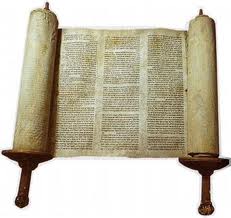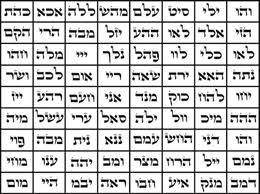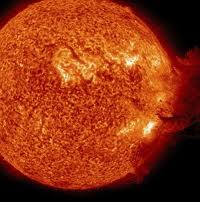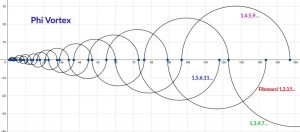If our thoughts, minds and imagination aren’t limited, why should the Torah be? Just because the part we can see is physically constructed of a set number of letters and spaces laid out in a definitive matrix, why can’t there be more there than meets the eye.
Let’s say we can expand the Torah Matrix of 248 columns by 42 rows, totaling 10416 lines, beyond their arbitrary artificial borders. Let’s say we did it 7 fold, or 7 times, as in the time cycle of 7 with which for spiritual reasons we Biblically count our days, weeks, and jubilee years. The cycle of 7 is a spiritual pumping mechanism in which every Shabbot the holy sparks we’ve uncovered that week are raised up (as if by elevator) and deposited above, exchanged for spiritual sustenance before we descend again for the next 6 days.
If we did expand the Torah 7 fold, we’d get 10416 x 7 = 72912, whose square root is  270.222, evocative of the 22 and 27 building blocks of the Hebrew alphabet, which are the prima fascia physical manifestations of the primordial black fire, and it’s also evocative of the number 2701, the numerical value of the Torah’s first verse.
270.222, evocative of the 22 and 27 building blocks of the Hebrew alphabet, which are the prima fascia physical manifestations of the primordial black fire, and it’s also evocative of the number 2701, the numerical value of the Torah’s first verse.
Sure, this expansion is arbitrary, but in a Torah model that we already know works out two different ways to exactly 58, why would we think there is any way that the Torah is meant to be simply 2-dimensional?
So for arguments sack, let’s say that the Torah matrix of 248 x 42 is 7 layers deep. It could be 70, or could be whatever, but at 7 levels deep we know that there are 72912 character spaces in a long narrow slab like shape. And while we’re at it, why can’t we fold that slab over, twist it, turn it into a ring, a mobius strip, or torus? We can of course, and it would never change what we see on the surface: “In the beginning G-d created Heaven and Earth…”
So what if the 42 rows times the number of columns x 7 layers worked out to a precise–we won’t say perfect, because the Torah is always perfect–72,000 lines? What would that mean? For starters, if we divide the cubic volume of 72,000 lines by 7 (it’s depth) and by 42 (it’s height), the resultant length of the Torah would be a very plausible 244.8 columns, given that most current Torahs are either 245 or 248 columns in length. These 244.8 columns are, of course, so reminiscent of the year 2448 which is when the Israelites received the Torah at Mt Sinai.
Remember, this is hypothetical. Nevertheless, let’s take those 72,000 lines at the given 29.31944 letters/line which we’ve previously showed to be the Torah’s average per line. It works out to 2111000 letters. Then, if one letter were to equal one day in time, the 72,000 lines would be equivalent to 5779.50 years, or in the Western calendar, the year 2019 CE, as constantly keeps coming up for the final redemption (geula), and as in line with the prophecies of the tzaddikim.
In keeping with the concept of cycles and time, let’s see if this relates to the lunar months upon which the Hebrew calendar is based. Since there are not 29.319 days in a lunar month, but actually 29.53059 days/month, the resultant 5779.5 years is equal to 71485 lunar months. And the difference between 72,000 and 71485 is 515, which is analogous to the 515 times that Moses prayed to enter the Promised Land, which, according to the sages, would have brought the final redemption right then. It’s also notably akin to the 515 hours between Rosh Hashannah (head of the lunar/solar year) and Hoshana Rabba (the checking of the lunar shadow and the sealing of our annual fate). Once again, cycles, this time annual.
Nevertheless, let’s get back to our primordial space/time unit that the Torah matrix was designed upon, the square root of 5. One of the fundamental Names of G-d, the “I am” in “I am that I am,” Ehyeh (EHYH) when spelled out in its highest form has a numerical value of 161 and 161/√5 = 72.00, evocative for sure of the 72 Names of G-d that were physically constructed from the 3 consecutive 72-letter verses of Exodus that bridged the Red Sea (Endless Sea).
We can thus say that this matrix of 72,000 character spaces is comprised of 1000 spatial units of Ehyeh(161/√5 ) , or 1000 x 72.00. Think about it because this is not an easy simple concept and it’s a very different way to conceive of the Torah and indeed of time/space. The Names of G-d are not static letter written on sheet of parchment.
Obviously, these 72 Names (triplets) existed spiritually long before the black fire coalesced at Creation and we see that the collective sum of the square roots of the individual 72 Names is 720.0, or 10 times 72.00, which is 10 times 161/√5 which is the numerical equivalent of the “spiritual space” of Ehyeh in each of the 10 sefirot (dimensions) that comprise the Tree-of-life. There are also 10 letters in Ehyeh (ELP HY YVD HY spelled out, reflecting its expansion throughout the 10 sub-sefirot (dimensions) of each dimension.
Please note that the 72 Names, like the Torah and the 42-Letter Name of G-d are designed  to form a specific matrix, an 8 column by 9 row one, and that when sum the collective square roots of each of the sum of the numerical values of the names in the 9 rows, we get improbably 280.0, the counter part to (1000 – 720.0). Please recall that the expanded 72,000 character Torah matrix is 1000 units of Ehyeh.
to form a specific matrix, an 8 column by 9 row one, and that when sum the collective square roots of each of the sum of the numerical values of the names in the 9 rows, we get improbably 280.0, the counter part to (1000 – 720.0). Please recall that the expanded 72,000 character Torah matrix is 1000 units of Ehyeh.
If the 72 triplets were set in any other matrix, this would not have worked out this way,  and neither would the fact that there are only two places amongst the 72 triplets where letters have back to back triple tagin (crowns): column 5, row 7 and column 7, row 8, or 5-7-7-8. 5778 HC (2018 CE), anyone? Don’t forget 5778 years are just 5778 cycles of Earth circling the sun whose surface temperature is 5778 K.
and neither would the fact that there are only two places amongst the 72 triplets where letters have back to back triple tagin (crowns): column 5, row 7 and column 7, row 8, or 5-7-7-8. 5778 HC (2018 CE), anyone? Don’t forget 5778 years are just 5778 cycles of Earth circling the sun whose surface temperature is 5778 K.
 As we enjoy the intense celestial light shows presented by the record solar flares being shot directly from the Sun to the Earth this year, do we have any doubts that there isn’t a greater design purpose here?
As we enjoy the intense celestial light shows presented by the record solar flares being shot directly from the Sun to the Earth this year, do we have any doubts that there isn’t a greater design purpose here?
Shavua Tov
Ezra




